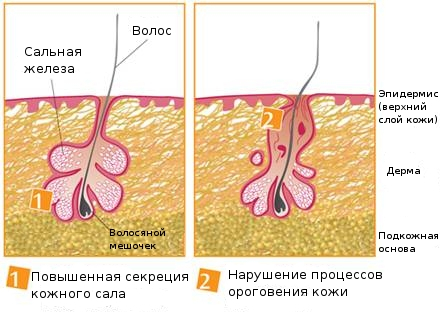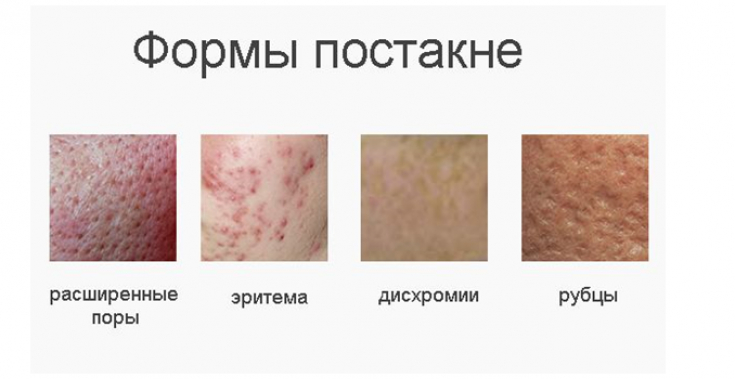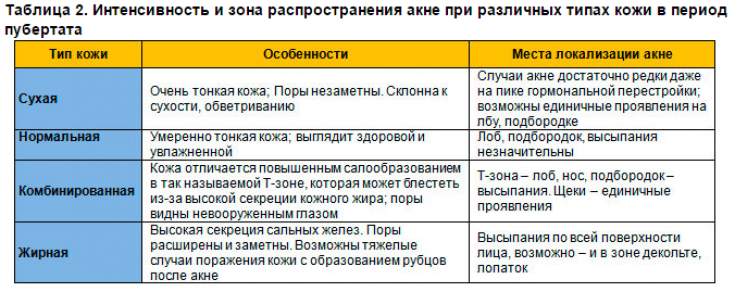One of the most urgent problems of dermatology and cosmetology is acne, which is a disease of the sebaceous glands and hair follicles, the functioning of which is associated with the influence of many factors. According to the literature, acne ranks third in the structure of dermatological diseases.
Find out in the article on estet-portal.com about the mechanisms of occurrence and the main causes of acne in different age periods of life.
Acne in the neonatal period
Neonatal acne − these are physiological acne that can occur in healthy newborns. Their appearance is associated with the presence in the child of maternal androgens received from the mother during the prenatal period, as well as with the activity of the adrenal glands during this period.
Follow us on Instagram!
The disease is manifested by the formation of closed comedones on the skin of the face. Neonatal acne does not require active treatment and usually regresses within a few weeks or months.
Acne: a serious condition with serious causes
The main task of the doctor in such cases − reassure the parents of the child, explain that the rash will disappear on its own, and the task of the parents − avoid attempts to "squeeze out" comedones and make sure that the child does not develop inflammatory acne elements on the skin, which will require topical antibiotic therapy.
Acne in early childhood
Baby acne has a completely different clinical picture − on the skin of the face, papulo-pustular rash predominates, with the conglobate form of acne infantum, nodes may appear. The rash usually appears between 3-6 months of age and may last up to 1-2 years of age.

This type of acne is not physiological and can serve as a marker of severe endocrine pathology in a child (including androgen-producing tumors). The presence of acne in newborns is an indication for a thorough examination of the child regarding the levels of androgens in the blood, ultrasound of the adrenal glands, ovaries, CT scan of the brain.
Treatment of acne infantum should include therapy of the underlying disease and external correction of the rash with antibacterial agents that are approved for use in children of the first year of life.
Premenstrual and cosmetic acne
Premenstrual acne is a physiological phenomenon for women. Their occurrence is mainly associated with high levels of progesterone in the luteal phase of the menstrual cycle. Acne elements are presented on the skin with comedones and a small number of papules and pustules. The rash does not require intensive care and regresses on its own, however, in case of inflammatory forms of acne, topical antibacterial agents should be used.
Retinoids: a revolutionary tool for fighting acne and photoaging
Cosmetic acne − This is a special form of acne that occurs against the background of the use of comedogenic cosmetics directly at the sites of their application to the skin. Skin products that contain lanolin, petroleum jelly, vegetable oils, butyl stearate, ethanol lauryl, phenol, oleic acid, aluminum, zinc sulfate have comedogenic properties.
Cosmetic acne is manifested by the formation of predominantly closed comedones, less often − papules and pustules.
The disease is more likely to affect women through their increased use of various skincare or color cosmetics. The main method of treatment and cosmetic acne is the rejection of the further use of comedogenic substances.

Pomade acne is also the result of the use of cosmetics. Their difference from cosmetics lies in the fact that they occur after the application of vegetable oils on the scalp. Treatment and prevention of lipstick acne is similar to cosmetic acne.
Pathogenesis of late acne
Late acne in women is characterized by the appearance at the age of 25-40 years of open and closed comedones, papules, pustules, less often − nodes and cysts with localization on the skin of the face, and sometimes on the back and chest. Their occurrence can be a marker of severe endocrine and gynecological diseases, such as polycystic ovaries, adrenogenital syndrome, etc.
Acne treatment: efficacy and safety of topical antibacterial agents
Therefore, in cases of post-pubertal acne that does not depend on the menstrual cycle and exists for a long time, especially if the elements of the skin rash are combined with other signs of hyperandrogenism (hirsutism, androgenetic alopecia, menstrual irregularities, amenorrhea, infertility) , attention should be paid to the examination of patients − study of the levels of follicle-stimulating and luteinizing hormones, free testosterone, dihydroepiandrosterone, estradiol, ultrasound of the ovaries and adrenal glands.

Systemic treatment of this form of acne will depend significantly on the presence of gynecological comorbidity and usually requires hormonal correction.
Both systemic and topical therapies are used to treat acne. In mild forms of acne, the use of rationally selected topical therapy, vitamin preparations and preventive measures in the form of professional skin care is sufficient in most cases. In more severe forms of acne, cosmetic skin care and the use of external agents remain essential additions to systemic therapy, which can reduce the treatment time.
Systemic antibiotic therapy in the treatment of acne









Add a comment